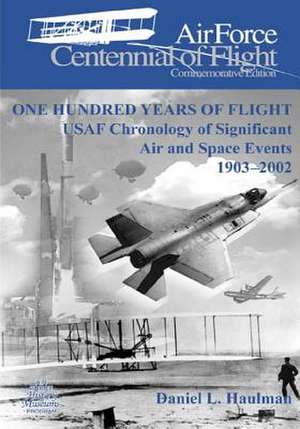One Hundred Years of Flight
Autor Office of Air Force History, Us Air Forceen Limba Engleză Paperback
Preț: 114.31 lei
Nou
Puncte Express: 171
Preț estimativ în valută:
21.88€ • 22.75$ • 18.06£
21.88€ • 22.75$ • 18.06£
Carte disponibilă
Livrare economică 24 martie-07 aprilie
Preluare comenzi: 021 569.72.76
Specificații
ISBN-13: 9781508587354
ISBN-10: 1508587353
Pagini: 170
Dimensiuni: 178 x 254 x 9 mm
Greutate: 0.3 kg
Editura: CREATESPACE
ISBN-10: 1508587353
Pagini: 170
Dimensiuni: 178 x 254 x 9 mm
Greutate: 0.3 kg
Editura: CREATESPACE
